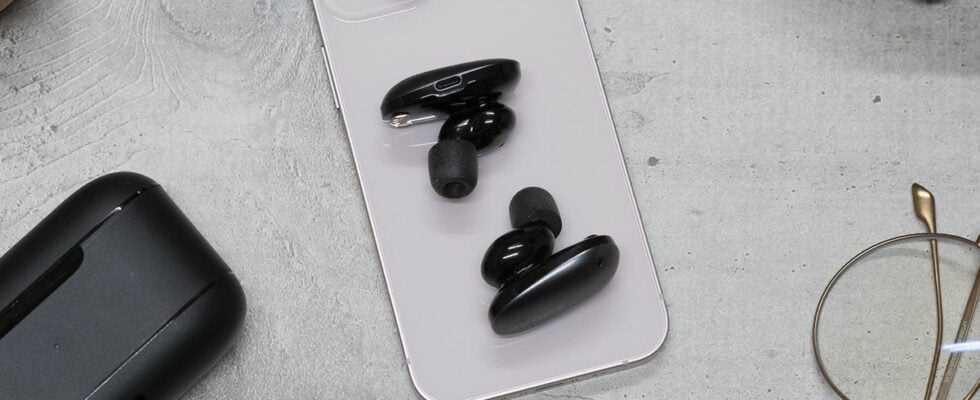3
Currently in our hands, the headphones true-wireless Aonic Free demonstrates surprising passive isolation for such a product. Let’s take a closer look at this technical feat.
Shure Aonic Free
Introductory price €199
For some years now, earphone manufacturers true-wireless strive to find the best way to attenuate ambient noise. While the majority of brands have chosen to integrate active noise reduction algorithms (with very variable results), Shure has bet on relying solely on the passive isolation provided by its Aonic Free. What, according to the American manufacturer, to avoid certain problems such as artifacts, breath, the feeling of “dizziness”… It must be said that the tour de force is particularly successful since the attenuation offered by these 100% wireless intras is quite bluffing.
Until now, the passive isolation provided by the different models of headphones proved to be effective on the mids and highs, but had great difficulty in acting on the lowest frequencies, even in optimal conditions. Not only do the Aonic Free offer better noise isolation than most headphones true-wirelessbut they also demonstrate unprecedented efficiency in attenuating low frequencies.
To achieve such a result, the Aonic Free rely on their design as well as on the materials used in the design of their shell. The end caps also contribute to this excellent insulation. Thanks to their shape memory foam, they perfectly fit the shape of the ear canal in order to seal it like an earplug.
Shure Aonic Free insulation measurement: reference measurement (black), passive insulation (grey), “Environment” mode (orange).
To realize the technical feat accomplished by Shure, we compared the isolation measurements of the Aonic Free to those of the WF-1000XM4, current champions of active noise reduction. On both evaluations, we can clearly see that the passive isolation of the WF-1000XM4 is completely out of date compared to that of the Aonic Free. In fact, the latter is so impressive that it rivals Sony’s active noise canceling headphones; which still surpass the Shure intras by a short head when it comes to attenuating the bass.
The Aonic Frees are nonetheless incredibly efficient and manage to “muffle” dull noises such as the bearings of a train or the roar of engines. Once the 300 Hz bar has passed, Shure headphones offer passive isolation that is simply unmatched to date. They are also extremely effective at dampening higher-pitched sounds such as talking around you or the clicking of a keyboard.
Sony WF-1000XM4 insulation measurement: reference measurement (black), passive isolation (grey), active noise reduction (red).
However, all is not rosy. Indeed, the measurements being carried out using a static measurement dummy, they do not fully reflect the experience of isolation felt by a human. Like any particularly intrusive in-ear, wearing the Aonic Free is accompanied by a significant highlighting of the resonances caused by walking (and, sometimes, the slight hum related to blood flow and heartbeat). Small inconveniences that prevent them from achieving the comfort provided by the most efficient noise-canceling headphones. Noise reduction algorithms therefore still have a bright future ahead of them.
See you in the next few days to discover the complete test of the Aonic Free.

